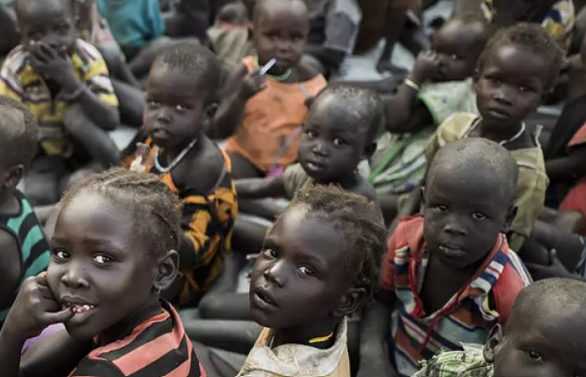Report on the human rights situation in South Sudan

South Sudan already hosts over 381,000 refugees and 2 million people internally displaced, with limited livelihood opportunities. The ongoing conflict in Sudan continues to compound an already critical situation, forcing people to cross into South Sudan.
After almost a decade of conflict and despite attempts made to implement the peace agreement, South Sudan continues to struggle with frequent violence, chronic food insecurity, and destructive flooding, often detracting from humanitarian achievements. Ongoing insecurity and violence, regional and national economic instability exacerbated by global downturns, and the catastrophic effects of climate change continue to impose severe hardships on millions of South Sudanese families, especially regarding their food and nutritional security. In 2024, nine million people need humanitarian assistance and protection services, displaying 73% of the population.
The South Sudanese refugee population, more than 65% of whom are children, remains extremely vulnerable. Based on the Integrated Food Security Phase Classification (IPC) results released in November 2023, South Sudan has one of the highest proportions of food-insecure people worldwide. South Sudan already hosts over 381,000 refugees and 2 million people internally displaced, with limited livelihood opportunities. The ongoing conflict in Sudan continues to compound an already critical situation, forcing people to cross into South Sudan. As of 31 January, 540,000 people had crossed into South Sudan. Of these, 80% were South Sudanese, 19% Sudanese refugees, and one percent third country nationals.
In Sudan, the ongoing battle between the Sudanese Armed Forces (SAF) and the Rapid Support Forces (RSF) shows no signs of subsidence. Confrontations between SAF and RSF occurred in various regions, including West Kordofan, Nyala, South Darfur, and El Fasher. The Wunthow/Joda Border is the primary entry point for individuals escaping the Sudanese conflict, making 85% of all new arrivals in South Sudan. From mid-April 2023 to January 31, 2024, 452,886 individuals from 100,202 households entered South Sudan through this border. Children under 5 comprise 19% and women constitute 51%.
However, access to primary services for new arrivals and people living in South Sudan remains strained, further complicating the provision of humanitarian assistance. The influx of nearly 500,000 Sudanese refugees since April 2023, almost doubling the total refugee population, puts immense pressure on resources and infrastructure, making this country a tough place to survive.
Children, women, and the elderly in both refugee and host communities face urgent needs for shelter, healthcare, food, clean water, sanitation, and protection services. According to predictions, only between July 2023 and June 2024, 1.2 million children and 870,000 pregnant and breastfeeding women and girls will require treatment for moderate acute malnutrition. Addressing gender-based violence prevention and response within refugee camps and host communities is also crucial.
More than 2.2 million refugees hosted in neighboring countries live in often insecure conditions exacerbated by factors such as the extreme drought and the food insecurity situation in the region. Over 41,000 South Sudanese fled to neighboring countries in the first nine months of 2023, while 272,000 returns were recorded.
With 25 million people in need and around 9 million now displaced, Sudan is home to the world’s largest internal displacement crisis. More people are likely to be displaced in 2024 under compulsion, across the borders into Kenya, Uganda and to a lesser extent Ethiopia.
However, spontaneous returns of South Sudanese are supposed to continue from the Democratic Republic of the Congo, Ethiopia and Uganda, while larger numbers are anticipated from Sudan in the wake of the conflict that broke out there in April 2023.
The country is still recovering from a civil war that ended in 2018, and while conflict has decreased, localized fighting remains widespread, leading to volatile security conditions. The resulting situation has been compounded by Sudan’s vulnerability to climate change and natural disasters, jeopardizing recovery and undermining development efforts.
References
https://reporting.unhcr.org/operational/situations/south-sudan-situation
https://reliefweb.int/report/south-sudan/wfp-south-sudan-situation-report-319-31-january-2024
https://reliefweb.int/report/sudan/sudan-regional-crisis-emergency-situation-update-january-2024

